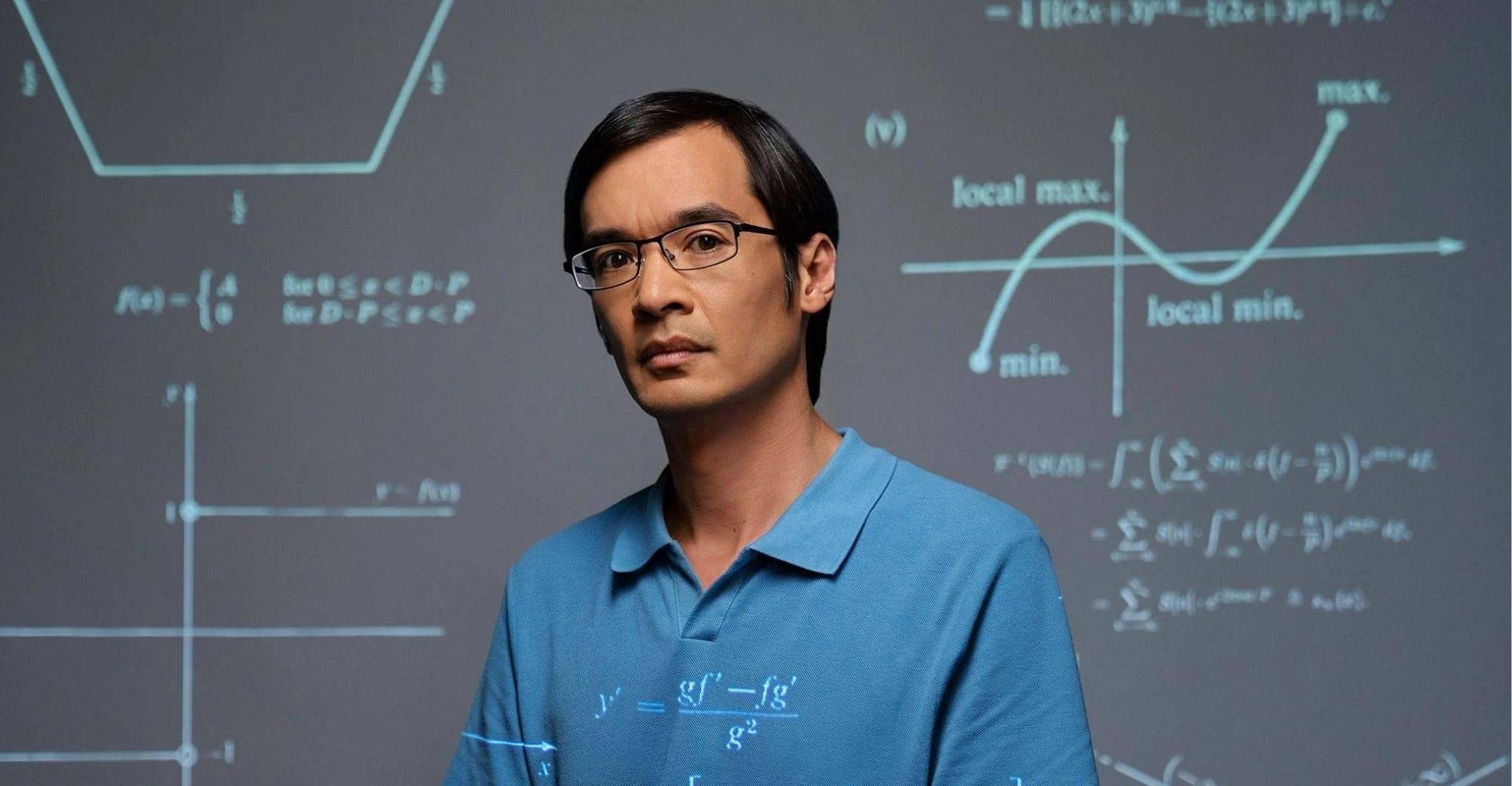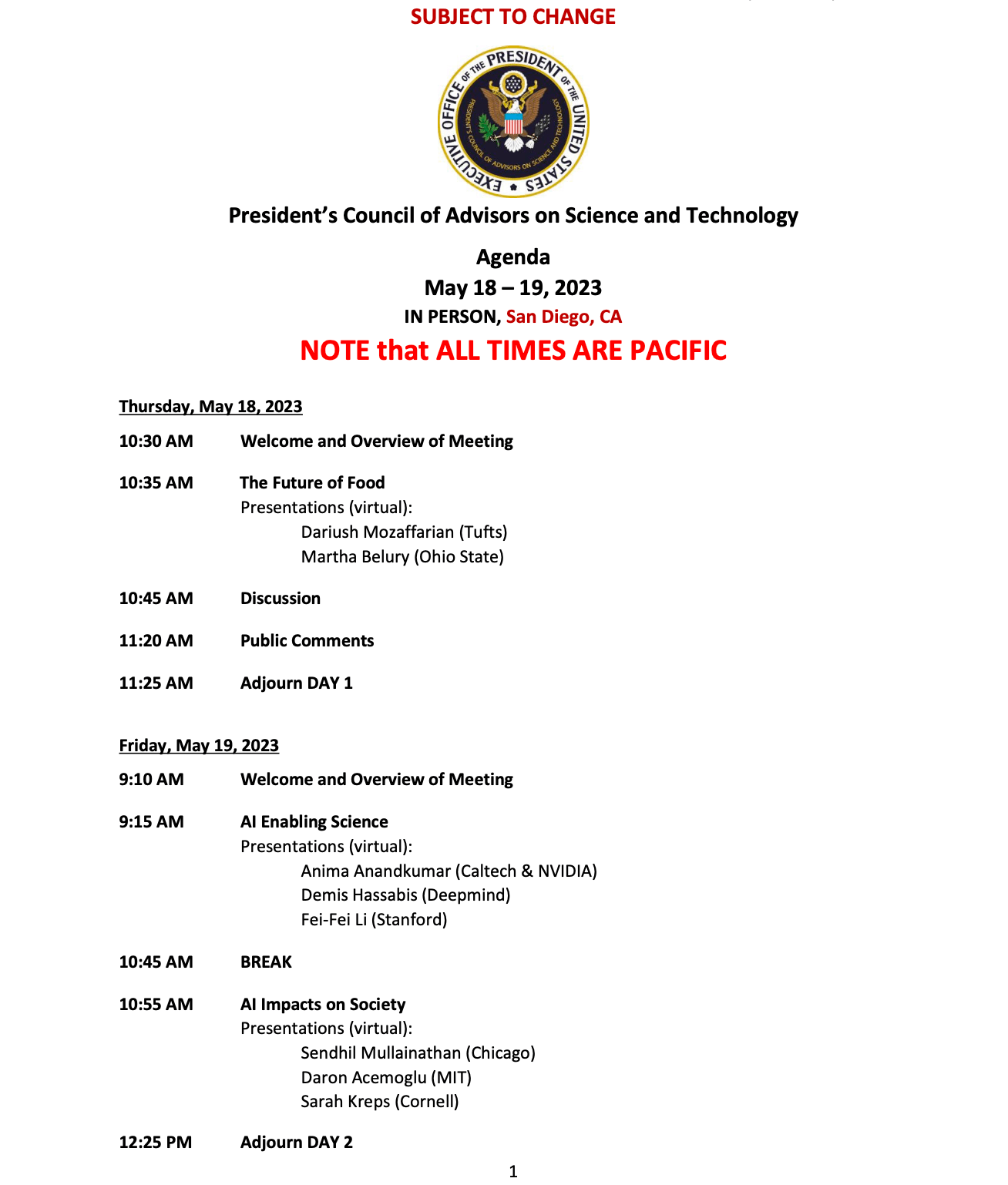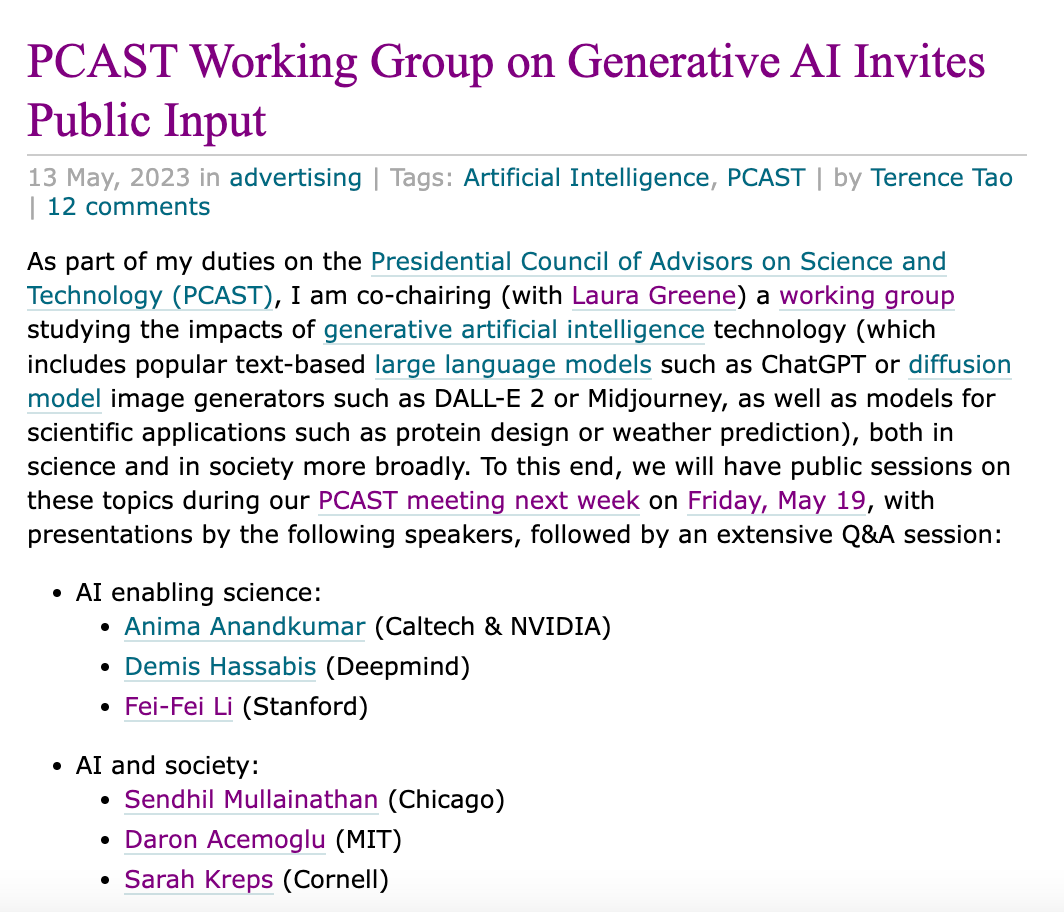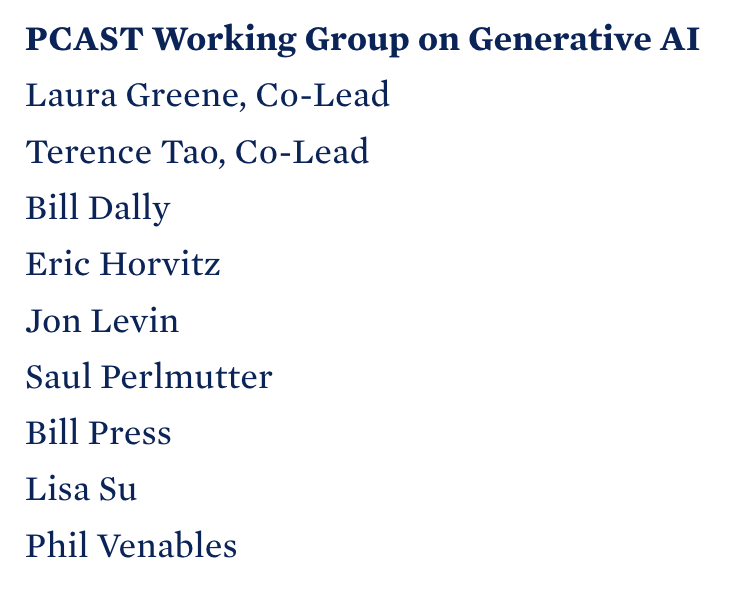 Technology peripherals
Technology peripherals
 AI
AI
 Chinese mathematician Terence Tao leads the White House Generative AI Working Group, and Li Feifei will speak at the group
Chinese mathematician Terence Tao leads the White House Generative AI Working Group, and Li Feifei will speak at the group
Chinese mathematician Terence Tao leads the White House Generative AI Working Group, and Li Feifei will speak at the group
·The Generative AI Working Group established by the President’s Council of Advisors on Science and Technology is designed to help assess key opportunities and risks in the field of artificial intelligence and provide advice to the President of the United States on ensuring that these technologies are developed and deployed as fairly, safely, and responsibly as possible .
·AMD CEO Lisa Su and Google Cloud Chief Information Security Officer Phil Venables are also members of this working group.

Chinese-American mathematician and Fields Medal winner Terence Tao.
On May 13, local time, Chinese-American mathematician and Fields Medal winner Terence Tao announced that he and physicist Laura Greene will co-lead the generative program of the U.S. President’s Council of Advisors on Science and Technology (PCAST). Artificial Intelligence Working Group. The group will hold a public meeting during the PCAST conference on May 19, local time. Demis Hassabis, the father of AlphaGo and founder of DeepMind, and Stanford University professor Li Feifei will give speeches at the meeting.

The U.S. President’s Council of Advisors on Science and Technology (PCAST) Generative Artificial Intelligence Working Group will hold a public meeting on May 19, local time.

Chinese-American mathematician and Fields Medal winner Terence Tao announced the news on his blog.
According to Tao Zhexuan's blog, the generative artificial intelligence working group mainly studies the impact of generative artificial intelligence technology in the scientific and social fields, including large-scale text-based language models such as ChatGPT, image generation such as DALL-E 2 and Midjourney processors, as well as models for scientific applications such as protein design or weather forecasting. It is worth mentioning that AMD CEO Lisa Su and Google Cloud Chief Information Security Officer Phil Venables are also members of this working group.

Member of the U.S. President’s Council of Advisors on Science and Technology (PCAST) Generative Artificial Intelligence Working Group.
According to an article published by the White House on its official website, the Generative Artificial Intelligence Working Group established by PCAST aims to help assess key opportunities and risks in the field of artificial intelligence, and to ensure that these are developed and deployed as fairly, safely, and responsibly as possible. Technology advises the President of the United States.
The article defines generative artificial intelligence as a type of AI system that, after training on a large data set, can be used to generate text, images, videos, or other output based on given prompts. These technologies are developing rapidly and have the potential to revolutionize many aspects of modern life. These tools are used in scientific research to design new drugs, proteins, and materials and are expected to facilitate the process of scientific discovery. In medicine, generative AI has the potential to provide recommendations to healthcare professionals. These tools can speed up writing computer code, writing presentations, and summaries in the workplace.
The article also points out that generative artificial intelligence models may also be used for malicious behaviors, such as creating false information, spreading misinformation, and impersonating personal identities. If used without safeguards, generative AI could polarize society, exacerbate prejudice and inequality in society, and more generally threaten democracy by making it difficult for citizens to understand what is happening in the world. Additionally, generative AI systems may violate privacy and destroy intellectual property.
Advising the President is the PCAST Generative Artificial Intelligence Working Group, which identifies additional needs and opportunities and proposes the best ways to address them.
In the meeting held on the 19th, two expert groups from the Generative Artificial Intelligence Working Group will introduce the current situation in this field. The speakers include:
AI Enabling Science:
Anima Anandkumar (Director of Machine Learning Research at NVIDIA, Professor of Computer and Mathematical Sciences at Caltech)
Demis Hassabis (Founder of DeepMind)
Li Feifei (Professor of Computer Science at Stanford University)
Al Impacts on Society:
Sendhil Mullainathan (Professor of Computing and Behavioral Sciences, University of Chicago Booth School of Business)
Daron Acemoglu (Professor of Economics, MIT)
Sarah Kreps (Professor of Government, Cornell University)
Tao Zhexuan said that the working group is soliciting public input to determine how to identify and promote beneficial deployment of generative artificial intelligence and find the best way to reduce risks. “Our initial focus is on the challenging topic of how to detect, counter, and mitigate AI-generated disinformation and deepfakes without sacrificing the free speech and public engagement with elected officials needed for a healthy democracy to function; going forward We may also make further requests around other aspects of generating artificial intelligence."
The emergence of ChatGPT has attracted great attention from top mathematicians, such as Terence Tao, who began to study how to use artificial intelligence to assist in completing their work. In an article in "Nature" magazine "How does AI change mathematics?" "The rise of chatbots highlights the importance of conversation", Andrew Granville, a number theorist at the University of Montreal in Canada, also said, "We are looking at a very specific question: Will machines change mathematics?" Mathematics Economist Kevin Buzzard agrees, “The fact that big mathematicians like Fields Medalists and other very famous mathematicians are now interested in this field shows that it is changing in a way that it has never been before. Got 'hot'."
Previously, Tao Zhexuan wrote on the decentralized social network Mastodon, "I can clearly say that today is the first day that GPT-4 saved me a lot of tedious work." In the attempt, Tao Zhexuan discovered ChatGPT ChatGPT has many hidden functions, such as searching formulas, parsing documents with code format, rewriting sentences in academic papers, etc. Sometimes ChatGPT can also perform semantic searches on unfinished math problems to generate some tips.
He also compared the comparative advantages between himself and current generative artificial intelligence tools:
I have developed enough technology to optimize my workflow for the tasks I perform every day, and AI tools don’t add much value to me. Most obviously in studying math, but also writing emails. I installed a plugin that lets GPT-4 write an email reply when I click a button, but I almost never use it because after decades of practice I've become able to write appropriate email responses quickly.
For those tasks for which I have some expertise but little practice, AI tools are helpful: often I can use them to create a first draft of the output, which I can then validate and revise, or at least use as a source of inspiration. Sometimes inspiration comes from the AI's flaws, which aligns with the idea of Cunningham's Law, but is more effective than trying to solve the problem myself. Examples of this type cover data processing, translation, and text formats that I rarely use, such as public speaking and rules documents.
For those tasks for which I have little expertise and do not require extreme quality and reliability, I can simply ask the AI tool and more or less follow its suggestions. Here, AI functions as a slightly more convenient version of a traditional search engine.
Finally, for those tasks for which I have no expertise but require quality and reliability that neither AI nor myself can solve, I must consult human experts, such as repairing a complex, expensive, delicate device.
An interesting attempt is that Tao Zhexuan asked ChatGPT to identify "Kummer's theorem" (used to describe how to find the optimal solution under constraints) from the description. Although ChatGPT cannot give the correct answer, it can still be based on Legendre's formula gives an approximate answer. Regarding the performance of ChatGPT, Tao Zhexuan said that artificial intelligence plays a role in mathematics, providing a preliminary approximate answer, and then combined with a traditional search engine, the correct answer can be easily found.
The above is the detailed content of Chinese mathematician Terence Tao leads the White House Generative AI Working Group, and Li Feifei will speak at the group. For more information, please follow other related articles on the PHP Chinese website!

Hot AI Tools

Undresser.AI Undress
AI-powered app for creating realistic nude photos

AI Clothes Remover
Online AI tool for removing clothes from photos.

Undress AI Tool
Undress images for free

Clothoff.io
AI clothes remover

Video Face Swap
Swap faces in any video effortlessly with our completely free AI face swap tool!

Hot Article

Hot Tools

Notepad++7.3.1
Easy-to-use and free code editor

SublimeText3 Chinese version
Chinese version, very easy to use

Zend Studio 13.0.1
Powerful PHP integrated development environment

Dreamweaver CS6
Visual web development tools

SublimeText3 Mac version
God-level code editing software (SublimeText3)

Hot Topics
 1387
1387
 52
52
 Chinese mathematician Terence Tao leads the White House Generative AI Working Group, and Li Feifei will speak at the group
May 25, 2023 am 10:36 AM
Chinese mathematician Terence Tao leads the White House Generative AI Working Group, and Li Feifei will speak at the group
May 25, 2023 am 10:36 AM
The Generative AI Working Group established by the President's Council of Advisors on Science and Technology is designed to help assess key opportunities and risks in the field of artificial intelligence and provide advice to the President on ensuring that these technologies are developed and deployed as fairly, safely, and responsibly as possible. AMD CEO Lisa Su and Google Cloud Chief Information Security Officer Phil Venables are also members of the working group. Chinese-American mathematician and Fields Medal winner Terence Tao. On May 13, local time, Chinese-American mathematician and Fields Medal winner Terence Tao announced that he and physicist Laura Greene will co-lead the Generative Artificial Intelligence Working Group of the U.S. Presidential Council of Advisors on Science and Technology (PCAST) .
 From 'human + RPA' to 'human + generative AI + RPA', how does LLM affect RPA human-computer interaction?
Jun 05, 2023 pm 12:30 PM
From 'human + RPA' to 'human + generative AI + RPA', how does LLM affect RPA human-computer interaction?
Jun 05, 2023 pm 12:30 PM
Image source@visualchinesewen|Wang Jiwei From "human + RPA" to "human + generative AI + RPA", how does LLM affect RPA human-computer interaction? From another perspective, how does LLM affect RPA from the perspective of human-computer interaction? RPA, which affects human-computer interaction in program development and process automation, will now also be changed by LLM? How does LLM affect human-computer interaction? How does generative AI change RPA human-computer interaction? Learn more about it in one article: The era of large models is coming, and generative AI based on LLM is rapidly transforming RPA human-computer interaction; generative AI redefines human-computer interaction, and LLM is affecting the changes in RPA software architecture. If you ask what contribution RPA has to program development and automation, one of the answers is that it has changed human-computer interaction (HCI, h
 Why is generative AI sought after by various industries?
Mar 30, 2024 pm 07:36 PM
Why is generative AI sought after by various industries?
Mar 30, 2024 pm 07:36 PM
Generative AI is a type of human artificial intelligence technology that can generate various types of content, including text, images, audio and synthetic data. So what is artificial intelligence? What is the difference between artificial intelligence and machine learning? Artificial intelligence is the discipline, a branch of computer science, that studies the creation of intelligent agents, which are systems that can reason, learn, and perform actions autonomously. At its core, artificial intelligence is concerned with the theories and methods of building machines that think and act like humans. Within this discipline, machine learning ML is a field of artificial intelligence. It is a program or system that trains a model based on input data. The trained model can make useful predictions from new or unseen data derived from the unified data on which the model was trained.
 Say goodbye to design software to generate renderings in one sentence, generative AI subverts the field of decoration and decoration, with 28 popular tools
Jun 10, 2023 pm 03:33 PM
Say goodbye to design software to generate renderings in one sentence, generative AI subverts the field of decoration and decoration, with 28 popular tools
Jun 10, 2023 pm 03:33 PM
▲This picture was generated by AI. Kujiale, Sanweijia, Dongyi Risheng, etc. have already taken action. The decoration and decoration industry chain has introduced AIGC on a large scale. What are the applications of generative AI in the field of decoration and decoration? What impact does it have on designers? One article to understand and say goodbye to various design software to generate renderings in one sentence. Generative AI is subverting the field of decoration and decoration. Using artificial intelligence to enhance capabilities improves design efficiency. Generative AI is revolutionizing the decoration and decoration industry. What impact does generative AI have on the decoration and decoration industry? What are the future development trends? One article to understand how LLM is revolutionizing decoration and decoration. These 28 popular generative AI decoration design tools are worth trying. Article/Wang Jiwei In the field of decoration and decoration, there has been a lot of news related to AIGC recently. Collov launches generative AI-powered design tool Col
 Watch: What is the potential of applying generative AI to network automation?
Aug 17, 2023 pm 07:57 PM
Watch: What is the potential of applying generative AI to network automation?
Aug 17, 2023 pm 07:57 PM
Generative artificial intelligence (GenAI) is expected to become a compelling technology trend by 2023, bringing important applications to businesses and individuals, including education, according to a new report from market research firm Omdia. In the telecom space, use cases for GenAI are mainly focused on delivering personalized marketing content or supporting more sophisticated virtual assistants to enhance customer experience. Although the application of generative AI in network operations is not obvious, EnterpriseWeb has developed an interesting concept. Validation, demonstrating the potential of generative AI in the field, the capabilities and limitations of generative AI in network automation One of the early applications of generative AI in network operations was the use of interactive guidance to replace engineering manuals to help install network elements, from
 Which technology giant is behind Haier and Siemens' generative AI innovation?
Nov 21, 2023 am 09:02 AM
Which technology giant is behind Haier and Siemens' generative AI innovation?
Nov 21, 2023 am 09:02 AM
Gu Fan, General Manager of the Strategic Business Development Department of Amazon Cloud Technology Greater China In 2023, large language models and generative AI will "surge" in the global market, not only triggering "an overwhelming" follow-up in the AI and cloud computing industry, but also vigorously Attract manufacturing giants to join the industry. Haier Innovation Design Center created the country's first AIGC industrial design solution, which significantly shortened the design cycle and reduced conceptual design costs. It not only accelerated the overall conceptual design by 83%, but also increased the integrated rendering efficiency by about 90%, effectively solving Problems include high labor costs and low concept output and approval efficiency in the design stage. Siemens China's intelligent knowledge base and intelligent conversational robot "Xiaoyu" based on its own model has natural language processing, knowledge base retrieval, and big language training through data
 Tencent Hunyuan upgrades model matrix, launching 256k long text model on the cloud
Jun 01, 2024 pm 01:46 PM
Tencent Hunyuan upgrades model matrix, launching 256k long text model on the cloud
Jun 01, 2024 pm 01:46 PM
The implementation of large models is accelerating, and "industrial practicality" has become a development consensus. On May 17, 2024, the Tencent Cloud Generative AI Industry Application Summit was held in Beijing, announcing a series of progress in large model development and application products. Tencent's Hunyuan large model capabilities continue to upgrade. Multiple versions of models hunyuan-pro, hunyuan-standard, and hunyuan-lite are open to the public through Tencent Cloud to meet the model needs of enterprise customers and developers in different scenarios, and to implement the most cost-effective model solutions. . Tencent Cloud releases three major tools: knowledge engine for large models, image creation engine, and video creation engine, creating a native tool chain for the era of large models, simplifying data access, model fine-tuning, and application development processes through PaaS services to help enterprises
 Transformative Trend: Generative Artificial Intelligence and Its Impact on Software Development
Feb 26, 2024 pm 10:28 PM
Transformative Trend: Generative Artificial Intelligence and Its Impact on Software Development
Feb 26, 2024 pm 10:28 PM
The rise of artificial intelligence is driving the rapid development of software development. This powerful technology has the potential to revolutionize the way we build software, with far-reaching impacts on every aspect of design, development, testing and deployment. For companies trying to enter the field of dynamic software development, the emergence of generative artificial intelligence technology provides them with unprecedented development opportunities. By incorporating this cutting-edge technology into their development processes, companies can significantly increase production efficiency, shorten product time to market, and launch high-quality software products that stand out in the fiercely competitive digital market. According to a McKinsey report, it is predicted that the generative artificial intelligence market size is expected to reach US$4.4 trillion by 2031. This forecast not only reflects a trend, but also shows the technology and business landscape.



